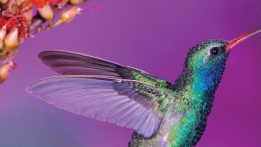Mosquito-borne Chikungunya virus is potentially worse than West Nile virus
A new tropical disease called Chikungunya has invaded the United States, and experts fear that this new virus is potentially worse than West Nile virus, which has killed 1,663 Americans since 1999.
Four cases of Chikungunya fever have been confirmed in Florida through the end of May this year. Symptoms of Chikungunya include fever, headache, severe muscle and joint pain, and a rash. There is no vaccine to prevent the disease, and pain medication is the main treatment.
Apparently, all four recent Chikungunya victims in the USA had been traveling in the Caribbean when they became infected. The virus is transmitted to people through mosquito bites. Mosquitoes become infected when they feed on a person already infected with the virus. Infected mosquitoes can then spread the virus to other people through subsequent bites.
Worldwide spread of the disease
The mosquito-borne Chikungunya virus has quickly spread throughout the world since first being identified in Africa in 1953. The disease is now found in 25 countries in Africa and 19 countries in Asia, including China and India. Two European nations, Italy and France, have reported cases of Chikungunya. In Italy alone, 130 cases were confirmed in an outbreak during September, 2007.
In the Americas, the disease is found throughout the islands of the Caribbean. The first locally transmitted case of Chikungunya in the Caribbean region was recorded in December of 2013. Since then there have been an estimated 60,000 suspected cases of Chikungunya across the Caribbean.
“Yellow Fever” mosquito
Chikungunya is most commonly transmitted by a species of mosquito (Aedes aegypti) that is found in at least 23 US southern and east coast states. The Aedes aegypti mosquito was also found in California for the first time in 2013.
Aedes aegypti is often called the “yellow fever mosquito” because it also transmits yellow fever and dengue fever. The female Aedes aegypti is a dark-colored mosquito with a row of white polka dots along its side. It tends to bite humans and mammals during the day.
The mosquito breeds in standing water
“The Aedes aegypti mosquito can breed in a tablespoon of standing water that remains for as little as one week,” said Jonathan Cohen, mosquito control expert and president of Summit Responsible Solutions® (www.summitresponsiblesolutions.com), manufacturer of Mosquito Dunks®, the number-one selling biological mosquito control product. “The most effective way to control mosquitoes is at the larval stage prior to their emergence as flying, biting adults.”
Because Aedes aegypti mosquitoes lay their eggs in standing water, Cohen advises homeowners to be vigilant in eliminating places where water can collect in their yards and gardens. To reduce mosquito populations:
- Drain water from garbage cans, house gutters, buckets, pool covers, coolers, flower pots or any other containers where water has collected.
- Remove and discard old tires, drums, bottles, cans, pots and pans, broken appliances and other items left outdoors that can collect water.
- Empty and clean birdbaths and pet water bowls at least once or twice a week.
- Protect boats and vehicles from rain with tarps that don’t accumulate water.
- Maintain swimming pools in good condition with appropriate chlorination. Empty the water from children’s swimming pools when not in use.
- Treat water that cannot be emptied– such as in ponds, fountains, drain lines, ditches and wherever water collects– with Mosquito Dunks® and Mosquito Bits® that contain Bacillus thuringiensis israelensis (BTI). BTI is a naturally occurring bacterium that kills mosquito larvae but is harmless to other living things.
Chikungunya virus is just one disease that is spread by mosquitoes. Other diseases spread via mosquito bites include West Nile virus, yellow fever, dengue fever, malaria, Eastern Equine Encephalitis and heartworm. ![]()





